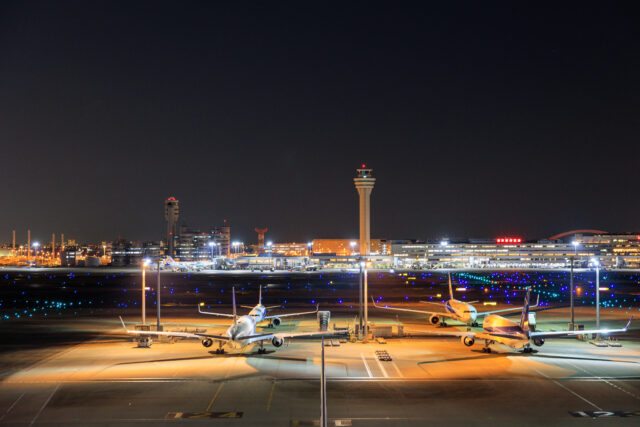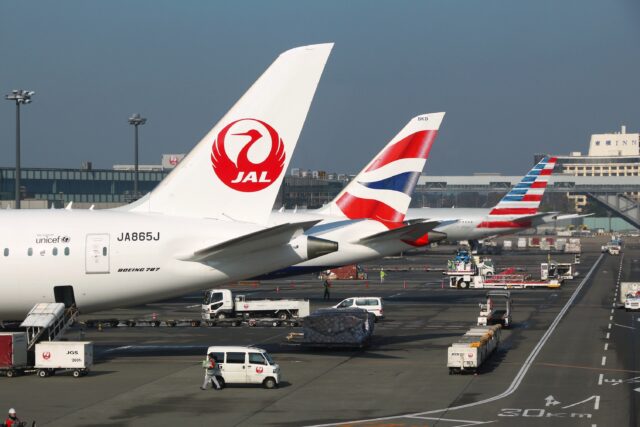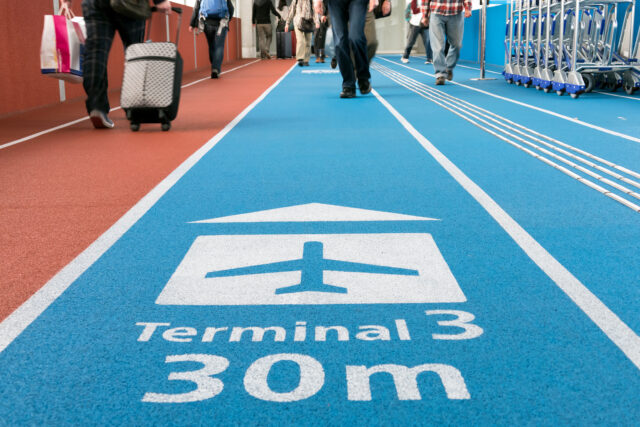narita airport
Home > Narita Airport
Narita Airport
- Narita Airport
- Terminal 1
- Terminal 2
- Terminal 3
 Located 60km east of downtown Tokyo, Narita Airport sees the greatest amount of international visitors, with about half the arrivals of overseas visitors to Japan pass through here.
Located 60km east of downtown Tokyo, Narita Airport sees the greatest amount of international visitors, with about half the arrivals of overseas visitors to Japan pass through here.
While it’s total passenger numbers are dwarfed by the other international airport in Tokyo at Haneda, it’s international numbers make it the arrival point of an overwhelming number of international visitors.
The main runway at Narita is 4,000m long, the longest in Japan(with Kansai’s #2 runway being the same length), while the 2nd runway is 2,500m in length.
Narita has an checkered history, with local opposition to the construction causing significant delays in development that continue to this day. Poor consultation with locals, and a strong socialist movement in the sixties lead to often violent resistance to authorities (several people have been killed in the battles that have ensued).
While the first terminal building was completed in 1972, the airport didn’t open until 1978 due to delays in getting the runway built due to protests and union activity. And when it opened it had the appearance of a prison, but with the guard towers facing outwards to stop people getting in, rather than escaping.
Things have slowly settled down, and while not being totally harmonious, the airport now has 3 terminals and 2 runways. Up until 2015 , all visitors had to show ID on entering the airport, regardless of their purpose for being there.
 Terminal one is the original terminal at Narita Airport, however it has undergone extensive renovations and almost doubled in size over the last few years, with south and north wings feeding into 5 satellites.
Terminal one is the original terminal at Narita Airport, however it has undergone extensive renovations and almost doubled in size over the last few years, with south and north wings feeding into 5 satellites.
It is primarily used buy All Nippon Airways (ANA), and other star alliance carriers (except Air India). In addition to several ANA lounges, there is also a United Club for star alliance customers.
Both Keisei and JR operate train services into and out of terminal 1. Keisei operates to and from Keisei Ueno and Nippori Station, which offer a good link to the Tokyo Yamanote loop line, while JR off express services to Tokyo Station, and connections to the Shinkansen bullet train.
Note that the stations in Terminal 1 are called Narita Kuko.
 Terminal 2 opened, as a state of the art terminal, in 1992, in anticipation of the opening of the 2nd runway. It has a main terminal and a satellite, which is accessed on foot via moving walkways.
Terminal 2 opened, as a state of the art terminal, in 1992, in anticipation of the opening of the 2nd runway. It has a main terminal and a satellite, which is accessed on foot via moving walkways.
While mostly a hub for Japan Airlines and their partners from OneWorld alliance, there are also several independent airlines operating out of this terminal, including low cost carriers Scoot and Air Asia X.
Train services operate out of what is called Narita Kuko Dai Ni Biru, which translates to Narita Airport #2 Building, and both JR and Keisei have stop offs here.
 Terminal 3 opened in 2015 and is mainly set up for low cost carriers. Jetstar operate both domestic and international flights out of terminal 3. As do Spring Japan and Vanilla Air.
Terminal 3 opened in 2015 and is mainly set up for low cost carriers. Jetstar operate both domestic and international flights out of terminal 3. As do Spring Japan and Vanilla Air.
In line with LCC operations, the terminal is sparse and feels like an aircraft hangar. If flying internationally, there is very little in the way of services beyond immigration. And there are no air bridges connecting planes directly to the terminal.
There is no station at Terminal 3, and passengers must either take the 500m walk to terminal 2, or catch the free shuttle.

